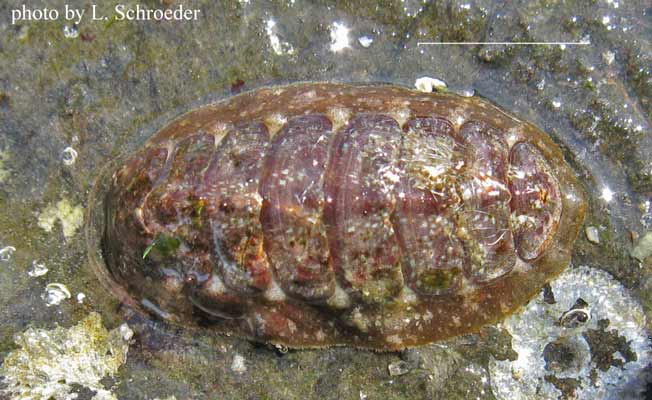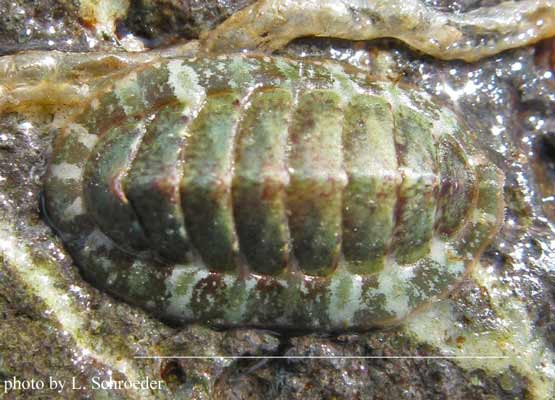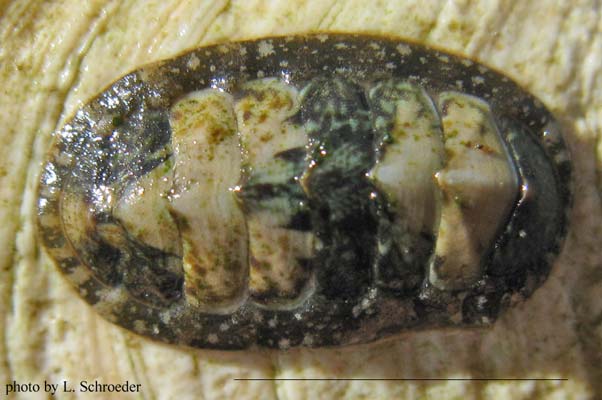Chitons (Polyplacophora)
Family Lepidochitonidae & Schizoplacidae
Click on photo to enlarge. Scale line in photo equals 1cm unless otherwise specified.
* Species which are commonly encountered on the beach.
Cyanoplax dentiens (Gould, 1846)
Gould's Baby Chiton *
intertidal
to 6m northern Mexico to southern
Alaska size to 2.7cm
This is a common intertidal species although often hard to spot due to its small size. It is variable in color but is most commonly greenish-gray to brown. White flecks or blue-green dots are also typical.
(previous names - Lepidochitona dentiens, Ischnochiton dentiens)
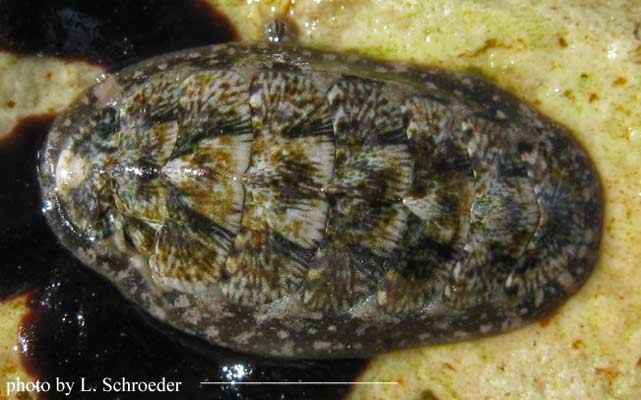 photographed intertidally
photographed intertidally
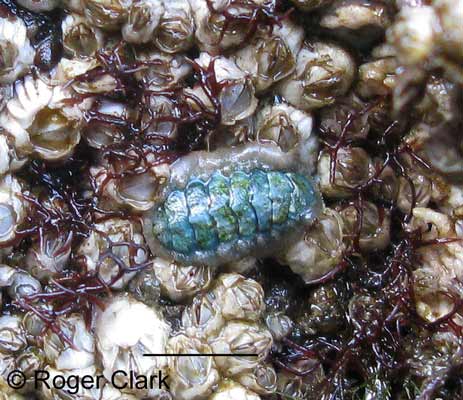
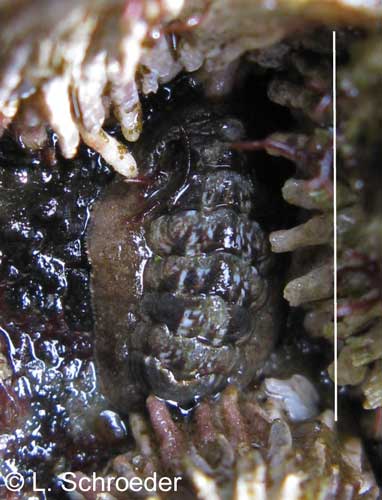
photographed intertidally Tacoma, WA, intertidal
Cyanoplax fernaldi (Eernisse, 1986)
Fernald's Baby Chiton
mid to high intertidal southern Oregon to SE Alaska size to 15mm
This
species is hard to find due to its small size. Its preferred
habitat is among Thatched Barnacles and Aggregating Anemone, where it
is tucked into crevasses where it is not easily seen. This
species is easy to confuse with C. dentiens although it usually has more eroded plates. Our left photo shows a rare turquoise phase.
previous names - (Lepidochitona fernaldi)
This page last revised: 2-25-2021
Schizoplacidae
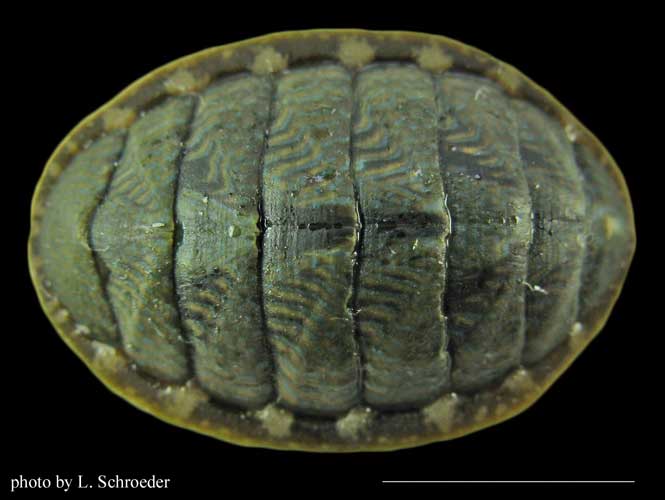
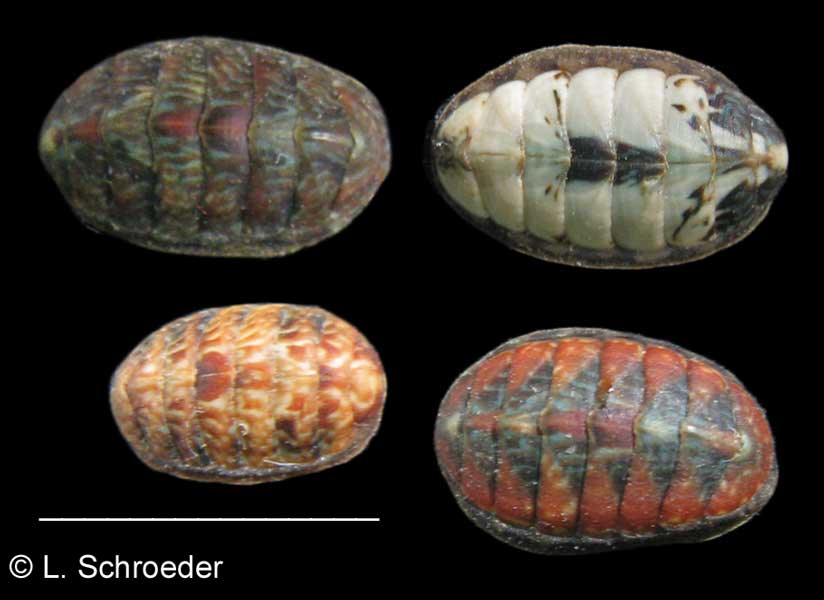
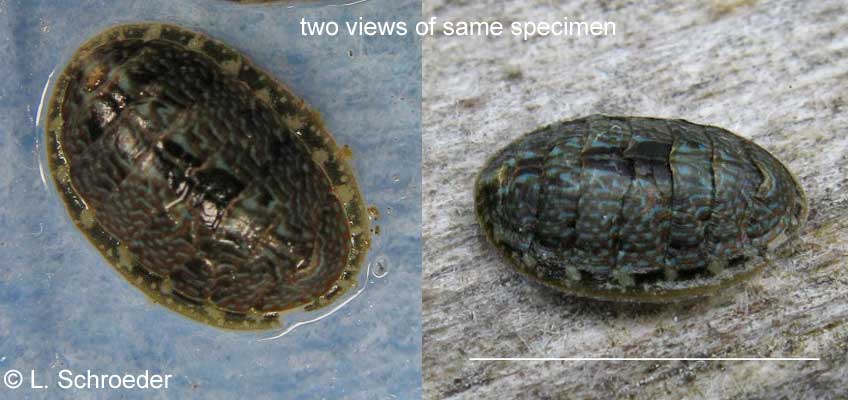
preserved
specimens and color variations
photographed intertidally
